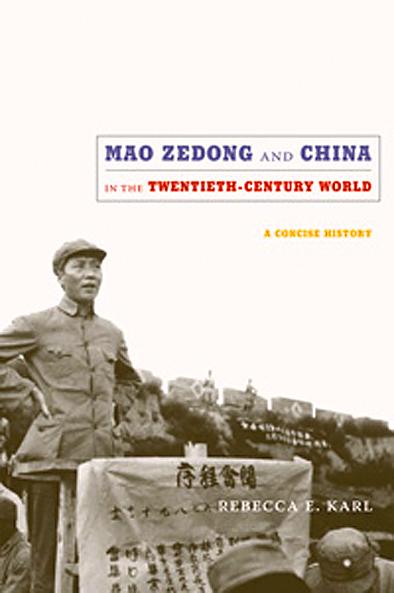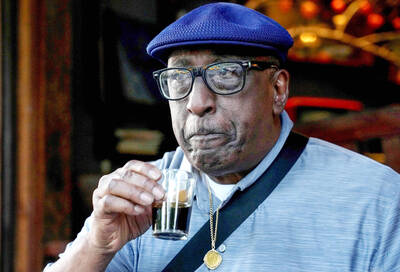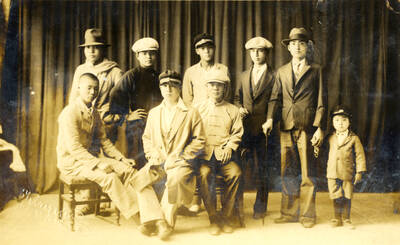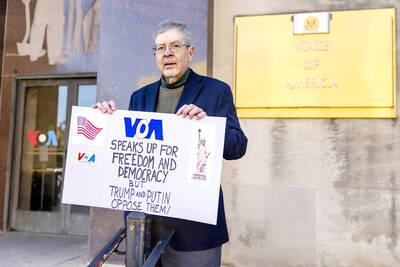What Mao Zedong and China in the Twentieth-Century World in essence represents is an attempt to rehabilitate Mao Zedong (毛澤東), at least in part, following the catastrophic plunge in his reputation over the last 20 years, both internationally and within China. Subtitled “A Concise History,” it’s written in the form of a biographical narrative, with regular excursions intended to illuminate the background situation at the time. The style is succinct and lucid, and when the author refers to the student classes at New York University on which she tried out versions of the material, you begin to understand that the book is probably intended for similar students in the future.
When Rebecca E. Karl refers in her title to “the 20th century world,” what she’s asking us to do is view Mao against the backdrop of his own times, not of ours. Today, she argues, the world is divided between proponents of what’s claimed to be capitalist freedom and its largely totalitarian enemies. But 50 years ago there were other options available, she believes, primarily an optimistic belief in the possibility of peaceful progress and social improvement following a socialist model.
Before reading this book I’d been warned to expect something of an intransigent, ideology-laden lecture. But this was not what I found. By and large, it seems to me a reasonably balanced, clear-headed survey of the Great Helmsman’s career and influence. It’s certainly not a belated attempt to counter Jung Chang and Jon Halliday’s Mao: The Unknown Story (reviewed in the Taipei Times on Jan. 8, 2006), even though that was a book that contained not a single sentence in Mao’s favor. (Karl mentions it in her first sentence, but it’s significantly absent from her bibliography.)

There are certain tests that can be applied to a book with aims such as this one’s. Three of them are as follows: First, what does it have to say about China’s 1950 annexation of Tibet? Second, what does it have to say about the Great Famine? And third, what is its approach to the Cultural Revolution? All three topics are sticks with which Mao’s critics have been more than happy to assault him in the past.
The author can be said to fail the first of these tests, pass the second by a narrow margin, and be at her most provocative on the third.
Tibet is scarcely mentioned, and China’s invasion not at all. The Famine is acknowledged, but with the number of deaths, according to “most responsible demographic estimates,” put at 15 million to 20 million. In his recent book Mao’s Great Famine (reviewed in the Taipei Times on Sept. 9), Frank Dikotter tentatively put the figure at 45 million, and perhaps more.
But it’s the Cultural Revolution that gets the most revealing treatment. It is as if it’s the author’s trump card, and she plays it with panache. The book’s opening remarks speak of her intention to take the phenomenon “seriously.” The movement, she eventually says, can be compared with the 1960s in Western countries. In both China and the West, she declares, it was an era of creativity and healthy rebellion against old norms, and essentially a new dawn.
The problem with this is that although in 1967 students in Western countries could certainly be seen brandishing Little Red Books, there was nothing Marxist about the hippies, and it was they who most characterized the era. Their so-called “counter-culture” was based on Buddhism, pacifism and free love, and a general turning away from money-making and the work ethic in favor of “cosmic consciousness.” The Red Guards didn’t stand for anything remotely comparable, and though professor Karl might enjoy reminding her students of the heady times enjoyed in earlier decades, in making the comparison she risks masking the true extent of the Red Guards’ lethal actions.
To be fair, she goes on to catalog some of these brutal acts, and even declares the movement as a whole to have been a failure. Nonetheless, she writes, “the many memoirs published in retrospect also make clear that, within the cruelty and violence, the Cultural Revolution was at times also an exhilarating, liberating and optimistic period.”
It’s very hard to agree with this charitable assessment. Even so, by and large this book presents what seems like a fair-minded portrait of the Chairman. The author, while seeing him as the dominant Chinese figure of his era, doesn’t, for example, downplay his womanizing, his purges (in, say, the “Futian Incident”), the persecution of Hu Feng (胡鳳), or the treachery involved in the “100 Flowers” episode. The Great Leap Forward was characterized by “lies,” she tells us.
She’s also skeptical of the more extravagant claims made for the Long March, points out that the steel produced by the backyard furnaces was “unusable in any form,” states that the Mao cult “was to have disastrous consequences,” and at one point even admits that “Mao’s personal dictatorial style came to have more and more destructive effects.”
This book, then, while no hatchet-job, is no whitewash either. It probably doesn’t aim to be a major reassessment, but is instead something in the manner of a student handbook. As such it contains no real treatment of primary sources, merely transcriptions of passages from a few interviews the author conducted with survivors of the period in China and Japan, none of them very revealing.
It may just be, of course, that the writer is trying to put an acceptably smiling public face on what is in reality a far tougher and more intractable intellectual position. But that is not the feeling generally conveyed. On the whole, if I had a class of young students approaching the period for the first time, I’d consider this book a not inappropriate textbook to hand them. And by the same measure it can also be recommended to the educated general reader.

On April 26, The Lancet published a letter from two doctors at Taichung-based China Medical University Hospital (CMUH) warning that “Taiwan’s Health Care System is on the Brink of Collapse.” The authors said that “Years of policy inaction and mismanagement of resources have led to the National Health Insurance system operating under unsustainable conditions.” The pushback was immediate. Errors in the paper were quickly identified and publicized, to discredit the authors (the hospital apologized). CNA reported that CMUH said the letter described Taiwan in 2021 as having 62 nurses per 10,000 people, when the correct number was 78 nurses per 10,000

As we live longer, our risk of cognitive impairment is increasing. How can we delay the onset of symptoms? Do we have to give up every indulgence or can small changes make a difference? We asked neurologists for tips on how to keep our brains healthy for life. TAKE CARE OF YOUR HEALTH “All of the sensible things that apply to bodily health apply to brain health,” says Suzanne O’Sullivan, a consultant in neurology at the National Hospital for Neurology and Neurosurgery in London, and the author of The Age of Diagnosis. “When you’re 20, you can get away with absolute

May 5 to May 11 What started out as friction between Taiwanese students at Taichung First High School and a Japanese head cook escalated dramatically over the first two weeks of May 1927. It began on April 30 when the cook’s wife knew that lotus starch used in that night’s dinner had rat feces in it, but failed to inform staff until the meal was already prepared. The students believed that her silence was intentional, and filed a complaint. The school’s Japanese administrators sided with the cook’s family, dismissing the students as troublemakers and clamping down on their freedoms — with

As Donald Trump’s executive order in March led to the shuttering of Voice of America (VOA) — the global broadcaster whose roots date back to the fight against Nazi propaganda — he quickly attracted support from figures not used to aligning themselves with any US administration. Trump had ordered the US Agency for Global Media, the federal agency that funds VOA and other groups promoting independent journalism overseas, to be “eliminated to the maximum extent consistent with applicable law.” The decision suddenly halted programming in 49 languages to more than 425 million people. In Moscow, Margarita Simonyan, the hardline editor-in-chief of the